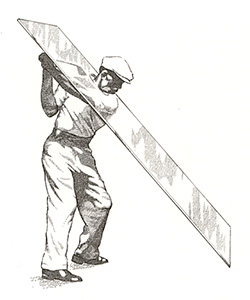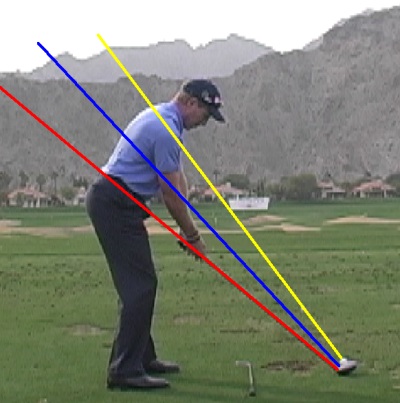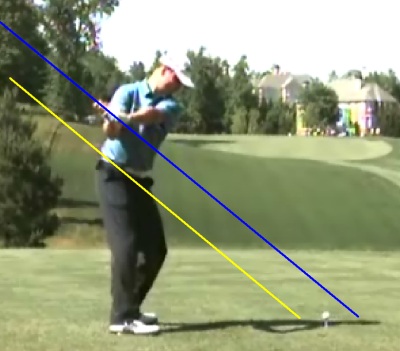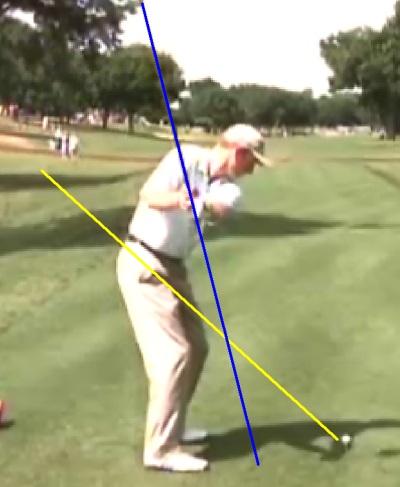Hi
Today I have
something new and exciting for you. Over the next few weeks I'm going to be
giving you some great information about the swing plane, from a man named
Jeff Richmond.
As you're no
doubt aware, the swing plane is so important in terms
of distance, direction and consistency.
And
if you get the swing plane correct, you will have way more chance of hitting
good shots consistently.
So
in today's first installment on the swing plane, Jeff is going to get everyone
on the same page by explaining exactly what the swing plane is.
And once he's
done that, he will then move into some more detailed aspects of the swing
plane, and what you need to do to have a consistently good swing plane.
Alrighty
then, let's make a start...
What
Is The Swing Plane?
By Jeff Richmond, Director of Instruction, ConsistentGolf
When you start
looking at the swing plane you can get confused - FAST!
It's an area
where the more scientific/engineer types seem to have a field day.
And if
you're not that way inclined you can read and watch some stuff on the swing
plane that will just give you a headache!
In today's article,
I'm going to try to keep this nice and simple so we can all be on the same
page for the rest of this swing plane series.
Now, the swing
plane first became popular thanks to Ben Hogan and his image of a pane of
glass.
When Ben Hogan
was talking about the swing plane in terms of the pane of glass, he wanted
the the left arm, hands, club etc. to stay below that pane of glass on the
backswing and downswing.
But when Ben
Hogan's famous five lessons book was published in 1957, they didn't have the
technology like we do today to dissect the golf swing to the nth degree. And
so the concepts of the swing plane have evolved a lot from the simple illustration
that Ben Hogan gave us.
So what is the
golf swing plane?
Well, the golf
swing plane is an imaginary flat service that is used to determine what path
certain parts of the body and club are traveling on throughout the golf swing.
This may sound
stupid, but it has to be said.... the golf club cannot move itself. A lot
of times when people look at the swing plane they only look at the shaft.
But the shaft is only moving as a result of the body movements.
So you need
to look very carefully at the plane your body is moving on when looking at
swing plane.
There are three
swing planes in the golf swing, and they are:
1. The backswing
plane
2. The downswing
plane, and
3. The follow-through
plane
It's important
to note that I said above "certain parts of the body and club",
because when you swing your shoulders move on a plane. Your elbows move on
a plane. Your hands move on a plane, your club moves on a plane etc, etc.
That's why if
you see someone analyzing a golf swing, they'll draw a lot of lines to try
to analyze what plane different parts of the body and club are moving on.
When you swing
you're obviously swinging in a circular pattern. And because you're bent over
when swinging your swing plane is tilted. How much it is tilted depends on
the player's height, how they stand to the ball, the club being used etc.
etc. There's a number of different variables.
So everyone will
not have the same swing plane because of this. And so there's no one exact
swing plane for everyone.
When I say that, I'm talking about absolute degrees
of swing plane. But there are good reference points every golfer can use,
and I'm going to discuss these in this swing plane educational series.
When you hear
about swing plane you often hear people saying that "so and so"
has a flat swing plane, or this golfer has a steep swing plane.
When people say
that, what are they referring too?
Most of the time
they are referring to the shaft angle. And a good checkpoint is halfway into
the backswing. A famous golf pro who is said to have a flat swing plane is
Zach Johnson.
Here is a picture of Zach at the half-way point in his golf
swing.
Zach uses a one
plane swing to hit the golf ball. So anyone that is a fan of the one plane
golf swing will not say that Zach's swing is flat. They'll say it's on plane.
That's where golf instructors get into arguments.
In the next email I'm going
to talk more about the one plane swing, two plane swing etc. But for now,
notice that at the half way point in his backswing the club shaft is pointing
out side the ball.
Now compare that
to probably the most extreme case of a two plane swing, and that is Jim Furyk.
Look where the shaft is pointing at the half way point in his backswing.
If you compare
those two swing planes, is there any wonder amateur golfers are confused about
the swing plane?! I imagine you're the same as me, in that you would swap
your playing record with either of those two players given the choice! :-)
So the swing
plane is a combination of the movement (arc) of the shoulders, arms, hands
and club predominantly.
And this is measured and analyzed with straight lines...
so it's 2d. I have seen 3d swing plane software and analysis, but for this
swing plane series I'm not even going there!
I hope that's
a simple explanation and everyone is on the same page.
If not, don't worry
because over this swing plane series, you should hopefully get a much better
understanding of it and what you should be trying to do with your swing plane.
I will be giving
you examples of each type of player, so hopefully you should find that interesting
and informative.
 Now when you're working on your club path you should do so with small swings first. Start off with chip shots trying to hit them through the gate you've setup. Then move up to half swings, then three quarter swings and finally, once you've mastered all the shorter swings, then full swings with a driver.
Now when you're working on your club path you should do so with small swings first. Start off with chip shots trying to hit them through the gate you've setup. Then move up to half swings, then three quarter swings and finally, once you've mastered all the shorter swings, then full swings with a driver.












